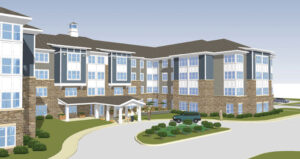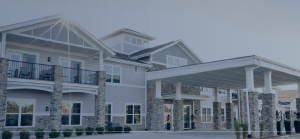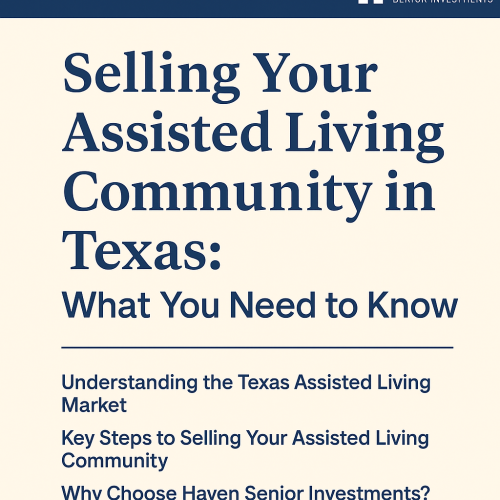The population of Americans 65-and-over is projected to nearly double over the next three decades, according to the U.S. Census Bureau, creating a growing demand for senior housing and in turn, a demand for senior care lending. Large, glamorous senior care projects aimed at the population of aging Baby Boomers often grab the most attention among investors and financiers and within the markets they intend to serve. Institutional investors and real estate investment trusts (REITs) are investing in apartment complex-style senior living properties which typically consist of 100 units or more. They are usually located within sizable metropolitan areas and often by necessity due to their construction costs, must target the wealthiest segment of the senior population.
Under the radar, there is a flood of development and acquisition activity, on the local and regional levels. Senior care at its core, is a very local business that must eventually find ways to serve seniors with a wide range of economic means and in all communities.
The owners, operators and developers in the non-institutional senior community segment are taking a different approach — growing their platforms with smaller, more intimate communities. Receiving personal and reliable care in a safe environment is the primary draw for seniors considering these communities, with less of an emphasis on extensive amenity packages, multiple dining venues, deluxe finishes and other perks of high-end seniors housing alternatives. These operators see opportunity in providing services in settings that feel more familiar to the seniors they serve, often in smaller cities and towns and at price points that are more affordable.
Alan Parrish of A1A Management Advisors, which is a non-institutional operator, says his company is focused on these senior living communities to offer affordability. “We acquire smaller facilities at a higher cap rate. If we acquire facilities at the right price, we can maintain more reasonable rates for the residents.”
The U.S. Department of Health and Human Services says most of the 65-and-older crowd will need some form of long-term care in their lifetime. While their needs will vary, each of the 10,000 people turning 65 every day are living longer, which inevitably results in long-term care service needs later in life. Non-institutional operator Jeff Merchant of Beehive Homes describes the senior care landscape,
“While I will always believe smaller is better, there is a place for larger communities. When a resident is generally healthy, outgoing and desires lots of social interaction, a larger community is probably the best option. When, however, a resident’s acuity decreases, health declines and needs increase, smaller communities are always going to be the better option.”
Home Sweet Home
Merchant’s company operates homes typically between 10 and 30 units. These smaller communities have an added bonus of a tight-knit staff who often become like an extended family to each other and to residents.
Parrish says he and his business partner, William Filippone, have also seen this dynamic in his company’s smaller facilities.
“The staff is more stable because they become a family — it’s more of a family atmosphere. The staff turnover at larger facilities is higher where people are not as emotionally involved.”
Small Towns, Big Opportunities
Typically, these smaller facilities tend to succeed well in rural areas, which are frequently considered “off-limits” for the institutional investors and large commercial lenders that gravitate toward major urban markets. One in five Americans lives in a rural area, according to the Census Bureau, and as the median age is increasing in most areas of the country, it is increasing even more so in rural locations, providing prime opportunities to fill gaps for senior care.
“We focus on non-urban areas because we’ve had more favorable results in those areas. The facilities are not as sought after by REITs and the larger institutional organizations, so therefore, the cap rates are higher. And if there’s already a senior living community there, we are not as worried about competition. It’s on nobody’s radar,” says Parrish regarding the acquisitions landscape.
Financing Challenges
Despite the success of the smaller facilities, the developers, owners and operators of these non-institutional senior community often face challenges in obtaining financing.
In general, the financing sources for these projects are very local. The dedicated healthcare and senior housing lending platforms of national and regional banks tend to focus on the institutional segment of the market. Someone who wants to build a smaller, privately-held facility in a smaller community usually goes to local community banks that don’t necessarily have experience lending to the sector. The local bankers lack broad industry perspective, don’t always understand the challenges of the senior care business and don’t necessarily understand how to structure a loan to accommodate those challenges.
Typically, business owners who are building a track record and are still bootstrapping equity investment for their next deal, are going to receive less interest from banks. South Carolina-based Live Oak Bank specializes in niche lending and offers Small Business Administration (SBA) loan products, which are designed to help smaller businesses build a track record and achieve the next level of success.
For example, construction loans, in particular, can be difficult to obtain if the sponsor has a limited track record or a limited personal balance sheet. In such cases, Live Oak assesses the opportunity on its likelihood of success and educates the sponsor on the merits of the SBA loan products. Live Oak Bank’s financing solutions are structured to contain risks, but they consistently embody the mission of the SBA’s loan guarantee program. The bank is often able to help small business owners and entrepreneurs accomplish their business goals when in many cases, without Live Oak and the SBA’s support, the business venture would fail to even lift off the ground.
The target customer of Live Oak Bank’s senior care lending division is a local or regional operator with anywhere from one to fifteen locations. The bank’s typical assisted living or memory care financing is $15 million or less. These products work best for ventures that are capitalized privately with personal funds or investments from friends or family and without large institutional capital partners.
Great Leverage
In the senior care lending segment of the typical bank financing world, leverage for construction averages about 60% to 65% of total project costs. Live Oak’s programs, however, can offer up to 85% leverage on a construction deal, usually averaging 75% to 85%.
Access to leverage at competitive rates and terms is a great advantage for young companies that don’t yet have access to larger outside investors, have not yet built the track record required to attract and negotiate with larger institutional investors or simply desire to maintain control and simplicity while preserving economics for themselves.
Solely-Focused
In line with Live Oak Bank’s philosophy, the senior care lending team offers not only financing but expertise accessible to the client.
Partnering with a national lending platform offers other advantages for borrowers that are geographically diverse. For example, if a small company is doing a deal in Tennessee and then crossing into Kentucky for the next deal, the borrower will work with the same team at Live Oak as opposed to dealing with a local banker in each market. The consistency of working with the same lending team across multiple transactions creates several efficiencies such as limiting duplicate underwriting requests, reducing costs and reducing the timeline to closing.
Written by Adam Sherman






